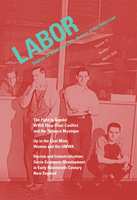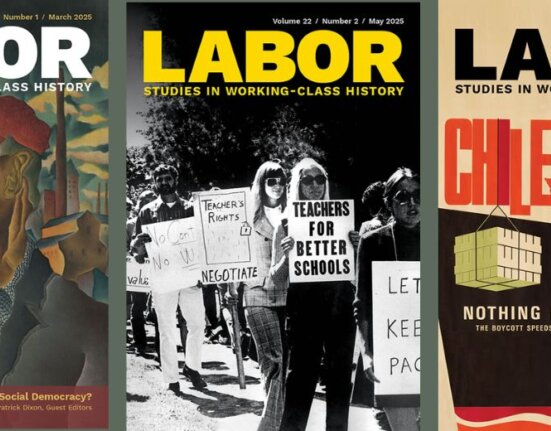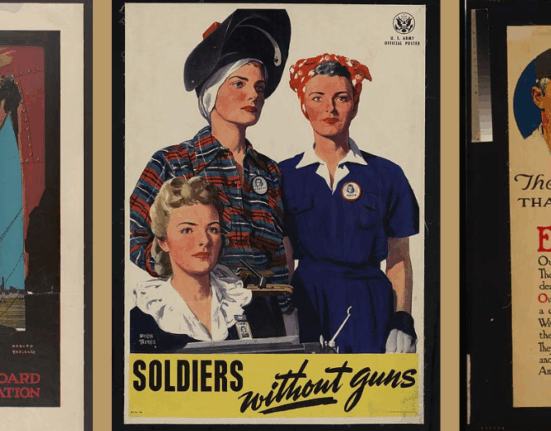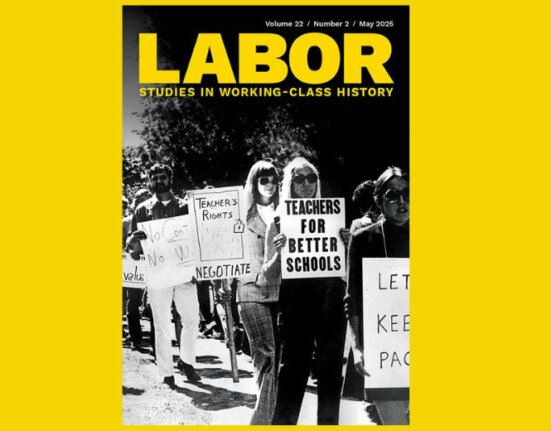In This Issue
The Common Verse
- Brooke Boulton, “Claiming Dependents“
LAWCHA Watch
- John W. McKerley and Jennifer Sherer, “The Iowa Labor History Oral Project“
Articles
- Gregory Wood,”“The Justice of a Rule That Forbids the Men Smoking on Their Jobs”: Workers, Managers, and Cigarettes in World War II America”
This article examines struggles over smoking privileges on industrial shop floors during World War II. I argue that workers’ wartime demands for an end to employer smoking prohibitions contributed significantly to several noteworthy strikes in automobile factories and defense plants. Workers’ pursuit of their smoking habit led them to push back some of the constraints of assembly line work discipline and employer rule making that defined mass-production industry during the early to mid-twentieth century, ultimately creating spaces of autonomy and rest within the rigidity and monotony of their work. As workers smoked on the job and struck to defend their habit, union officials found themselves working on behalf of their members to prevent employers from laying off or firing workers for violating companies’ smoking bans. Struggles over smoking at work would play an important (but overlooked) role in the growth of organized labor during the 1940s.
- Trish Kahle, ““A Woman’s Place Is in the UMWA”: Women Miners and the Struggle for a Democratic Union in Western Pennsylvania, 1973–1979”
Women reentered the American coal mines in 1973 and quickly made an impact in the United Mine Workers of America (UMWA) as union members struggled with the meaning and future of union democracy. Although existing scholarship has pointed to the end of union democracy in the UMWA after the decline of the Miners for Democracy in 1973–74, this article argues that newly hired women miners took up the mantle of union democracy and, in the process of forging space for themselves in the workplace and the union, became leaders among the UMWA’s rank and file as workers attempted to cope with neoliberal transformation across the 1970s.
- Peter Hinks, ““This Beautiful and Rapidly Improving Section of Our City”: Race, Labor, and Colonizationists in Early Industrializing New Haven, 1800–1830”
What contemporary historians aptly discern as an unprecedented surge of hostility against blacks in the urban North in the 1820s—grounded in new scalings of the meaning of white and black—was in fact rooted fundamentally in more than just race and newly aggressive racialized thinking. That surge can actually be understood as one vital facet of an increased hostility toward the laboring poor as a whole once that racialized hostility is placed more expressly within the broad context of the profound transformations that the launch of industrial capitalism in these centers wrought upon work, space, and class. As elites in New Haven, Connecticut, sought to dislocate a black neighborhood that by 1825 also included white laboring poor and transients from the center of a district that early manufacturing was rapidly transforming, they evinced this new racialized hostility. This essay probes these events and interprets them explicitly in terms of this broader context of emerging industrial capitalism.






